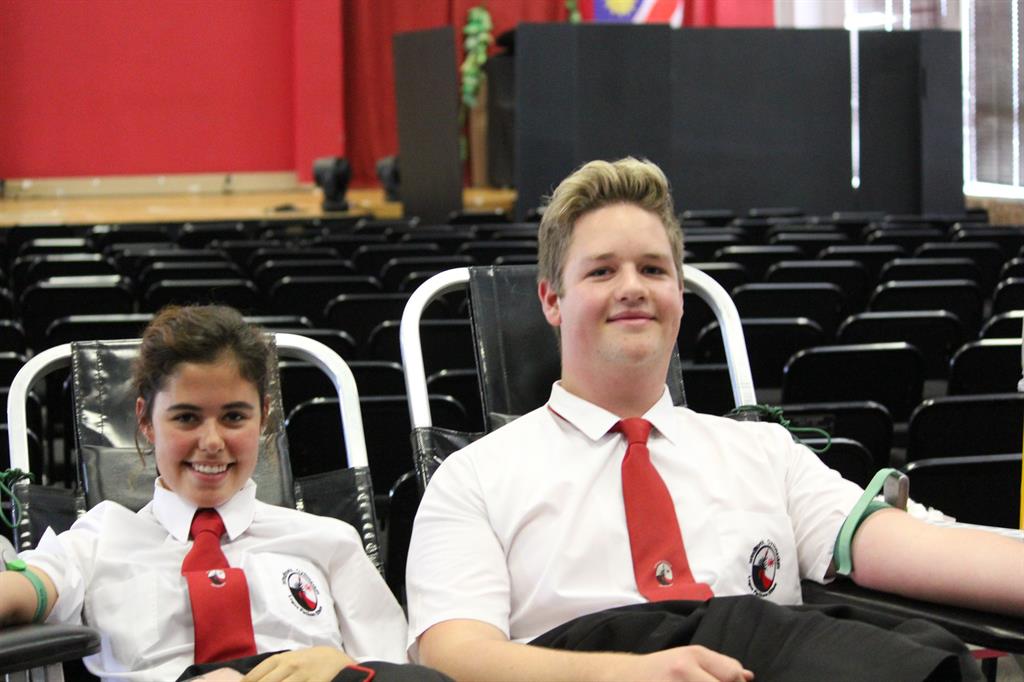How to save a life
Henru JessenOn the 9th of February the Blood Transfusion Service of Namibia (NamBTS) visited Windhoek Gymnasium Secondary School. We had an interview with Mvula Job, one of the representatives of NamBTS who visited our school. He told us that their goal was to collect at least 55 units of blood from Windhoek Gymnasium.
The process of collecting blood for transfusions seems quite simple, but there are some behind-the-scenes processes that need to take place before the blood can be used safely during a blood transfusion. Each donator’s blood is quickly tested to see whether their iron levels are within the normal range before donation can begin. Then three tubes of the blood drawn from each person are sent to a laboratory to be tested for HIV and Diabetes, to make sure that it is safe to use. The service travels all over Namibia to provide people who are in need with the precious blood.
Jeani Holz, a Gr.11 learner, donated blood for the first time and had the following to say when asked how she experienced the donation, “It was my first time, and since I am afraid of needles I was a little anxious at first, but after the needle was inserted, my nerves calmed and it was all right.” Her reason for donating? “Because it can save a life, and you get a free cookie afterwards!”
Mr. Job says that they are always in need of blood and asked us to encourage more people to donate blood. If you are interested in donating blood you must be older than 16 years and weigh more than 55 kg. In the morning, before you plan to donate, you need to eat a proper meal to ensure that your blood sugar levels do not decrease too rapidly. After donating blood you are not allowed to participate in any extreme sports. After you have donated blood, you receive small gifts in the form of cookies, cups of coffee and glasses of juice.




Comments
My Zone
No comments have been left on this article